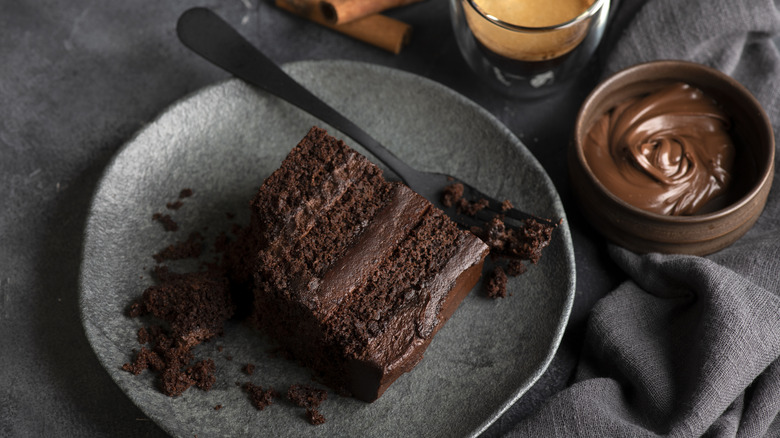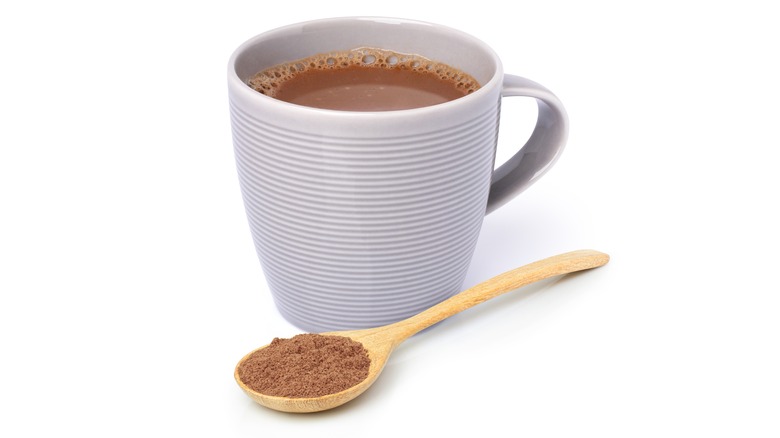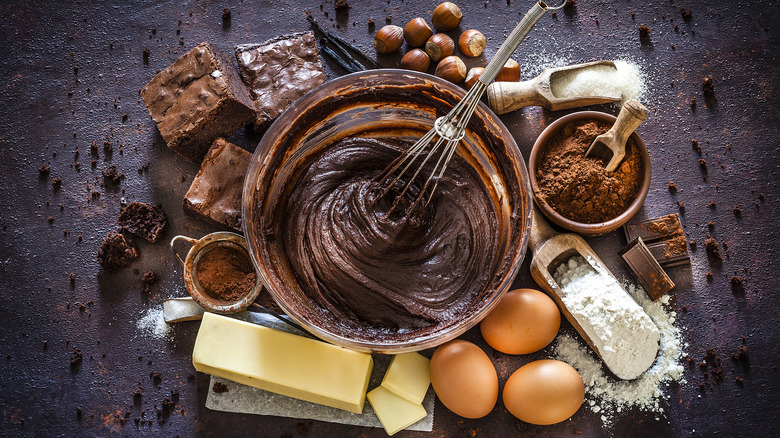The Secret Ingredient To Give Baked Desserts Instant Depth
Flour, sugar, eggs, butter, and chocolate are practically the only things you need to whip up a somewhat decent batch of brownies or a classic chocolate cake, but there's one little secret ingredient that's stopping your go-tos from turning into absolutely extraordinary desserts: malted milk powder.
Malted milk powder may be generally something you would associate with chocolate-covered candy balls, the odd pack of biscuits, or the nostalgic milk-based drink. But, with a toasted butterscotch and toffee-like flavor, malted milk powder can do wonders for desserts, too. Dubbed the sweeter equivalent of savory umami bombs seen in miso, MSG, and soy sauce, malted milk powder has roasted, earthy, caramelized, and nutty flavors that will be welcome additions to most sweet treats.
Plus, malted milk powder has milk solids in it that can promote browning and add a creamy richness to desserts whereas the salt and baking soda present — which makes the dry powder sweet but savory at the same time — helps to balance all the flavors. Once you start noticing malted milk powder's goodness, it may very well become an indispensable part of your baking routine.
What is malted milk powder?
Malted milk powder is essentially powdered milk but with additional ingredients added in. The powder contains wheat flour, salt, and sodium bicarbonate (baking soda) as well as additional sugars and flavoring, depending on the brand. The base, however, is malt: a grain like barley that is soaked in water, sprouted, dried, and then ground into a powder.
Invented in 1873 by James and William Horlick, malted milk powder was originally a nutritional supplement meant for infants and ailing people. By soaking, germinating, and quick-drying barley to stop the germination process, malted milk powder aka Horlicks for its namesake creator turned barley into an easy-to-digest powder that could help with malnutrition. It was also shelf-stable enough to be used as an emergency and survival food ration for soldiers. The fact that it also tasted good made Horlicks a quick hit among the masses, and the powder gave rise to malted milk, malted milkshakes, and even malt shops (otherwise known as soda shops).
While malted milk powder was seen as a dietary supplement at first, that changed with the invention of the candy Giants — now known as Whoppers — in the 1930s when the dry powder began to be used in the world of desserts.
How to add malted milk powder to desserts
With a toasty, caramelized sweetness and creamy texture, malted milk powder can bring much-needed dimension to just about any dessert. A few tablespoons of malted milk powder added in with other dry ingredients will boost the flavor of any chocolate-based recipes — cookies, brownies, cakes, and the like — and it can also be used in breads to give them a striking brown crust. The roasted nuttiness of malted powder also goes well in bakes like palmiers that have caramelized sugar.
In case you're using the special ingredient in recipes that don't mention it, it's best to start with one tablespoon of the dry powder and then taste before adding more. Although you only need a small amount of malted milk powder for it to work its magic, the powder does tend to be naturally sweet and contains salt and baking soda, which can affect the flavor of the recipe, so it's best to tweak any additional sugar or salt added on top.
Additionally, malted milk powder comes in several different flavors including vanilla and chocolate, but to make the most of its natural milky, toasty, and nutty flavor profile, you may want to stick to the plain option when adding it to desserts.



